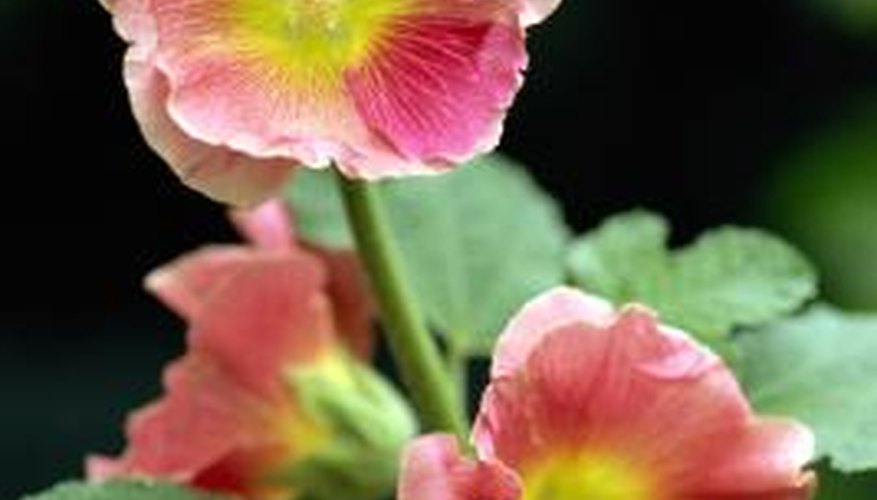Dogs will chew and ingest plants for unknown reasons, leading to the concern about a plant's toxicity. Dogs may chew on plants and grass because of a nutritional deficit, an illness or boredom, acording to the ASPCA Virtual Behaviorist.
About Hollyhocks
A heirloom plant grown in many gardens, the hollyhock (Althea rosea) grows in zones 3 to 8. In June, disk-shaped colourful flowers bloom and last into August. Growing up to a height of 6 feet, hollyhocks are planted as a border plant. The hollyhock also self seeds, creating masses of the plant growing in one area.
- A heirloom plant grown in many gardens, the hollyhock (Althea rosea) grows in zones 3 to 8.
Misconceptions
The hollyhock plants have no toxic properties and will not poison dogs. Because it is nontoxic to animals and humans, some people use the flowers of the hollyhock as an edible garnish in salads.
Preventing Ingestion
Even though hollyhocks are not found to be poisonous to dogs, any plant material a dog ingests has the potential to make the animal sick to its stomach. Finding the reason why your dog is eating plants and training it not to chew on them will help prevent the animal from ingesting a plant that is poisonous. Training aids like a smell- or taste-deterrent spray will help keepin your dog safer outside.
